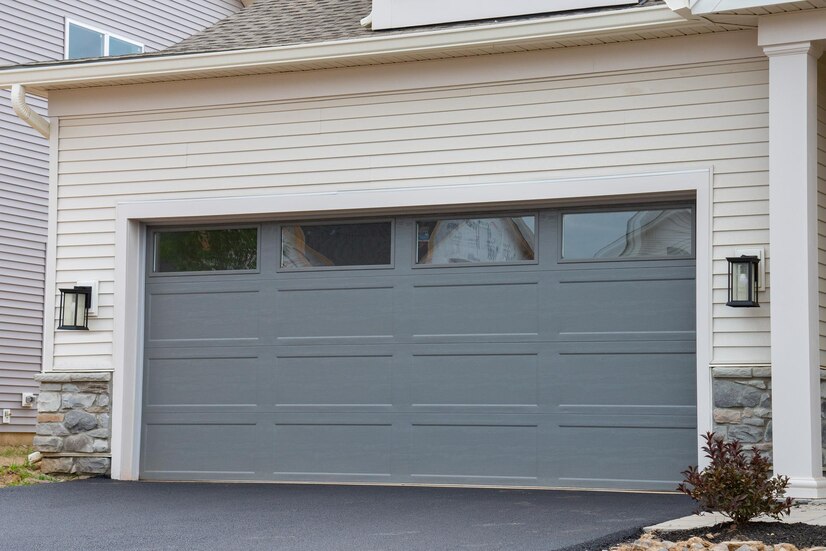Insulated Garage Doors: A Wise Investment for Your Home
Garage doors are crucial to a home’s security and aesthetic appeal. Amidst various options, insulated garage doors emerge as a wise investment for homeowners. These doors offer many benefits, including energy efficiency, climate control, and enhanced durability. Moreover, they provide improved sound insulation, contributing to a quieter living environment. Notably, insulated garage doors also elevate the curb appeal of a property, potentially increasing its value. In this blog, we delve into why insulated garage doors are an intelligent choice for homeowners who want to improve their houses’ appearance and usability.
The Benefits of Insulated Garage Doors
Insulated garage doors offer multiple benefits for homeowners. They enhance energy efficiency by regulating temperatures, providing climate control for a comfortable environment, boasting enhanced durability for long-lasting performance, and offering improved sound insulation, creating a quieter living space. These advantages make insulated garage doors a wise investment for any home.
- Energy Efficiency: Insulated garage doors act as a thermal barrier, regulating temperatures within the garage. This feature reduces heat loss in winter and prevents excessive heat gain during summer. Homeowners can enjoy a more energy-efficient space, possibly reducing the price of cooling and heating expenses.
- Climate Control: Beyond energy efficiency, insulated doors help maintain a consistent temperature inside the garage. This climate control is especially beneficial for homeowners using their garage as a workspace, gym, or storage area, as it protects belongings and ensures a comfortable environment year-round.
- Enhanced Durability: Insulated garage doors are built to withstand wear and tear more effectively than non-insulated ones. The added insulation provides structural strength, contributing to the door’s longevity. This durability ensures a reliable performance over time; this lessens the requirement for regular upkeep and repairs.
- Improved Sound Insulation: Insulated doors contribute to a quieter living environment by minimizing noise from the outside. Whether it’s street traffic or neighborhood activities, the sound insulation properties of these doors create a serene atmosphere, which makes them an excellent option for those looking for serenity.
Improved Sound Insulation
Insulated garage doors go beyond temperature regulation, excelling in sound insulation to create a more serene living environment. The added insulation effectively minimizes external noise, shielding your home from the hustle and bustle of street traffic or neighborhood activities. This feature is precious for homeowners seeking tranquility in their living spaces or utilizing adjacent rooms for work or relaxation.
The sound insulation capabilities of these doors contribute to an overall quieter atmosphere, enhancing the comfort and privacy of your home. Whether it’s reducing the impact of passing vehicles or dampening loud sounds, the improved acoustics provided by insulated garage doors make them an ideal choice for those prioritizing a peaceful living experience.
Curb Appeal and Home Value
An insulated garage door dramatically improves a home’s curb appeal and contributes to its overall visual appeal. Their sleek design, various styles, and customizable options elevate the exterior appearance, making a positive first impression. Moreover, these doors can increase the property’s value, as potential buyers consider them an attractive feature. Investing in insulated garage doors not only boosts a home’s visual appeal but also has the potential to increase in value at auction in the future. It is a wise investment for homeowners looking to maximize their home’s value.
 Types Of Insulated Garage Doors
Types Of Insulated Garage Doors
Insulated garage doors come in various types, including steel, wood, aluminum, vinyl, and composite. Each offers unique durability, aesthetics, and energy efficiency benefits for homeowners.
- Steel Insulated Garage Doors: Steel doors are durable and low-maintenance, offering excellent insulation properties. They come in various styles and designs, including traditional raised panels or modern flush designs, providing homeowners with versatility in aesthetics while ensuring energy efficiency and security.
- Wood Insulated Garage Doors: Wood doors offer a classic and elegant look, adding warmth and character to a home’s exterior. These doors are often constructed with layers of insulation sandwiched between wooden panels, providing thermal efficiency and aesthetic appeal. Homeowners can choose from various wood types and finish to suit their preferences.
- Aluminum Insulated Garage Doors: Aluminum doors are robust and lightweight, making them a well-liked option for modern homes. These doors feature insulation materials inserted within aluminum frames, offering energy efficiency while providing sleek and contemporary designs. They resist rust and corrosion, ensuring long-lasting performance with minimal maintenance.
- Vinyl Insulated Garage Doors: Vinyl doors are known for their durability, resistance to dents, and low maintenance requirements. These doors are constructed with insulated panels made from vinyl materials, providing excellent thermal efficiency and noise reduction. They are available in various colors and finishes, offering homeowners flexibility in customization.
- Composite Insulated Garage Doors: Composite doors combine resources like recycled materials and wood fibers to create a durable and environmentally friendly option. These doors offer excellent insulation properties while mimicking the look of natural wood. They are a practical and fashionable home option since they resist rotting, warping, and cracking.
Installation Process
The installation process of insulated garage doors includes several measures to guarantee lifetime and optimal functioning. From preparing the garage opening to securing the door in place, each stage requires precision and attention to detail to achieve optimal results and enhance the overall performance of the door.
- Preparation of Garage Opening
Before installation begins, the garage opening must be carefully measured and inspected to ensure it can accommodate the new door. Any obstructions or debris must be removed, and the opening should be leveled and adequately framed to provide a stable foundation for the door.
- Mounting Hardware Installation
Next, the mounting hardware, including tracks, rollers, and hinges, is installed according to the manufacturer’s specifications. These components are crucial for the door’s smooth operation and must be securely attached to the garage structure to withstand the weight and movement of the door.
- Attaching Insulated Panels
Once the hardware is in place, the insulated panels of the door are positioned and secured to the framework. Care is taken to ensure each panel is properly aligned and sealed to prevent air leaks and maximize insulation efficiency. This step may require additional personnel assistance due to the panels’ size and weight.
- Spring and Cable Installation
The springs and cables responsible for counterbalancing the door’s weight are then installed. These components are crucial for safe and smooth operation, as they help lift and lower the door with minimal effort. Proper tensioning of the springs is essential to prevent issues such as door imbalance or premature wear.
- Testing and Adjustment
The door is tested once all components are installed to ensure it operates smoothly and safely. Adjustments may be made to the spring tension, track alignment, and closing force to optimize performance and address any issues. Proper testing and adjustment are essential for the long-term reliability and functionality of the door.
Cost Considerations
When considering insulated garage door costs, homeowners should weigh upfront expenses against long-term savings. While insulated doors may have a higher initial cost compared to non-insulated options, they offer significant benefits such as energy efficiency, climate control, and durability, potentially leading to lower energy bills and reduced maintenance expenses over time. Additionally, the increased curb appeal and potential boost in property value can further justify the investment. Homeowners should factor in these benefits when evaluating insulated garage doors’ overall value and affordability.
Maintenance Tips
To ensure insulated garage doors’ longevity and optimal performance, homeowners should regularly clean the door, lubricate moving parts, inspect the weather stripping, and schedule professional maintenance checks.
- Regular Cleaning: Wash your insulated garage door with a mild soap solution and water to maintain cleanliness. This helps remove dirt, grime, and debris accumulating over time, preventing corrosion and maintaining its appearance. Focus on both the exterior and interior surfaces for thorough cleaning.
- Lubrication of Moving Parts: Periodically lubricate the moving parts of your insulated garage door, such as hinges, rollers, and springs, to ensure smooth operation and prevent friction-related wear and tear. Use a silicone-based lubricant for best results, applying it sparingly to avoid attracting dust and debris.
- Inspection of Weather Stripping: Check the weather stripping along the bottom and sides of the door for signs of wear or damage. Replace any worn or cracked weather stripping to maintain a tight seal and prevent drafts, moisture infiltration, and energy loss, thus maximizing the door’s insulation properties.
- Professional Maintenance Checks: Schedule regular professional maintenance checks for your insulated garage door, ideally once or twice a year. A trained technician can identify and address issues early on, such as misalignment, spring tension imbalance, or motor malfunctions, ensuring optimal performance and extending the door’s lifespan.
Conclusion
Insulated garage doors prove to be a smart investment for homeowners seeking enhanced energy efficiency, climate control, durability, and sound insulation. Their ability to improve the overall curb appeal of a home while potentially increasing its value underscores their importance. While the upfront cost may be higher compared to non-insulated options, the long-term savings on energy bills and maintenance expenses, coupled with the peace of mind provided by their reliability, make them a worthwhile investment. By following proper maintenance practices and periodic checks, homeowners can ensure their insulated garage doors continue to function optimally, adding value and comfort to their homes for years to come.


 Types Of Insulated Garage Doors
Types Of Insulated Garage Doors